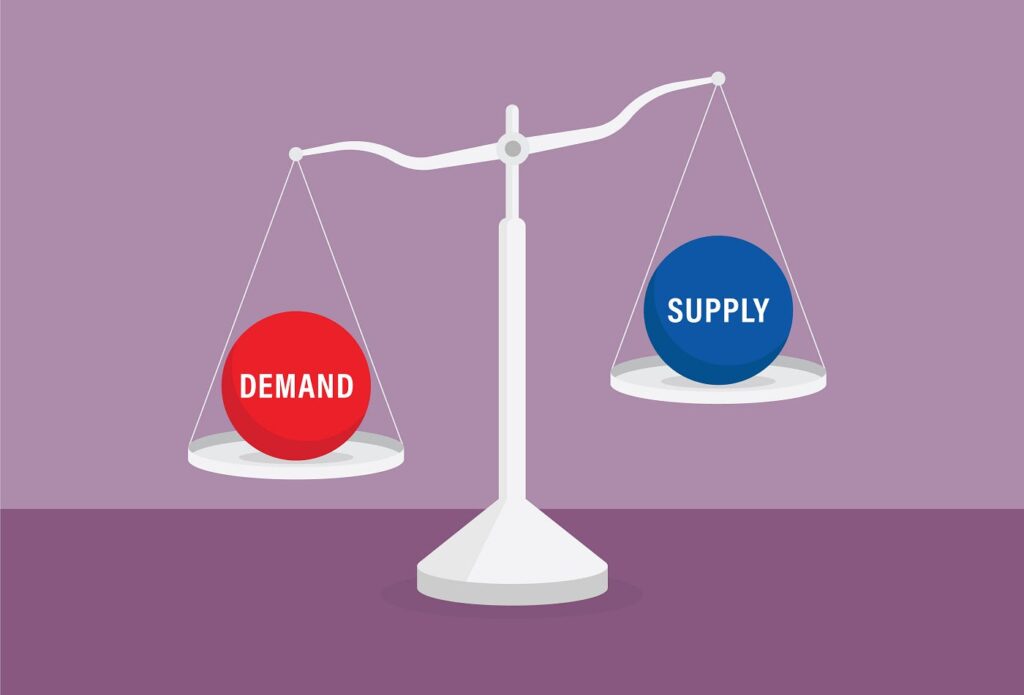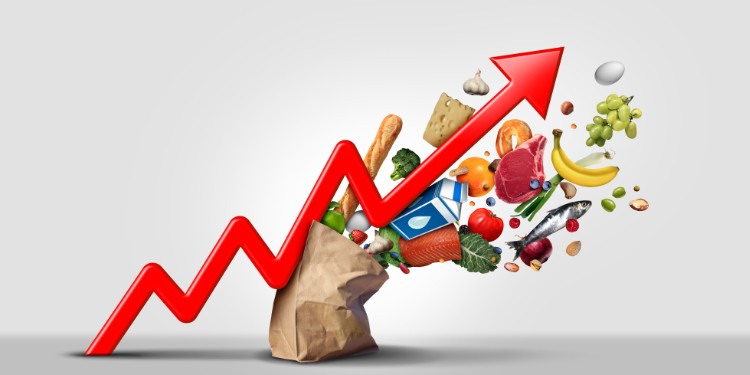Supply and demand are the most fundamental concepts in economics, acting as the invisible hands that shape market prices and production levels. They are the driving forces behind resource allocation in a market economy, determining everything from the cost of your morning coffee to the price of a house. Understanding this core relationship is essential for students, business professionals, and anyone seeking to comprehend how the world’s economic systems function.
The Law of Demand: Consumer Behavior
The law of demand describes consumer behavior. It states that, ceteris paribus (all other things being equal), as the price of a good or service increases, the quantity of that good or service that consumers are willing and able to purchase decreases. Conversely, as the price decreases, the quantity demanded increases.
🔑 Key Concepts of Demand
- Quantity Demanded: This refers to the specific amount of a good or service consumers are willing to buy at a particular price.
- The Demand Curve: When plotted on a graph with price on the vertical (Y) axis and quantity on the horizontal (X) axis, the demand curve is typically downward-sloping. This negative slope illustrates the inverse relationship between price and quantity demanded.$$Q_d = f(P)$$
- The Substitution Effect: If the price of a product rises, consumers may switch to a cheaper alternative (a substitute good). For example, if the price of beef rises, consumers might buy more chicken instead.
- The Income Effect: A price increase effectively reduces consumers’ purchasing power. Even if their nominal income stays the same, their real income (what they can actually buy) decreases, leading them to demand less of the expensive good.
➡️ Shifts in the Demand Curve
A change in price causes a movement along the existing demand curve. However, a change in any factor other than price that affects consumer willingness or ability to buy will cause the entire demand curve to shift—either to the right (increase in demand) or to the left (decrease in demand).
Factors that Shift Demand (Determinants of Demand):
- Consumer Income: For normal goods (like cars), a rise in income increases demand (shifts right). For inferior goods (like instant noodles), a rise in income decreases demand (shifts left).
- Tastes and Preferences: Trends, advertising, or health reports can dramatically shift demand.
- Prices of Related Goods:
- Substitutes: If the price of a substitute (e.g., Pepsi) rises, the demand for the original product (e.g., Coke) will rise (shift right).
- Complements: If the price of a complementary good (e.g., hot dogs) rises, the demand for the original product (e.g., hot dog buns) will fall (shift left).
- Expectations: If consumers expect the price to rise in the future, current demand may increase (shift right).
- Population/Number of Buyers: An increase in the number of potential buyers increases market demand.
The Law of Supply: Producer Behavior
The law of supply describes producer behavior. It states that, ceteris paribus, as the price of a good or service increases, the quantity of that good or service that producers are willing and able to offer for sale increases. Conversely, as the price decreases, the quantity supplied decreases. Producers are incentivized by higher prices because they lead to greater profit potential.
🔑 Key Concepts of Supply
- Quantity Supplied: This refers to the specific amount of a good or service producers are willing to sell at a particular price.
- The Supply Curve: When plotted on a graph, the supply curve is typically upward-sloping. This positive slope illustrates the direct relationship between price and quantity supplied.$$Q_s = f(P)$$
➡️ Shifts in the Supply Curve
Like demand, a change in price causes a movement along the existing supply curve. A change in any factor other than price that affects a producer’s willingness or ability to produce will cause the entire supply curve to shift—either to the right (increase in supply) or to the left (decrease in supply).
Factors that Shift Supply (Determinants of Supply):
- Input Prices (Cost of Production): If the cost of raw materials, labor, or energy falls, production becomes cheaper, increasing supply (shift right).
- Technology: Improvements in technology make production more efficient, lowering costs and increasing supply (shift right).
- Taxes and Subsidies:
- Taxes: Higher taxes on production increase costs and decrease supply (shift left).
- Subsidies: Government subsidies lower the effective cost of production and increase supply (shift right).
- Number of Sellers: An increase in the number of firms in the market increases overall supply.
- Expectations: If producers expect the price of their product to fall in the near future, they might increase current supply to sell it now (shift right).
⚖️ Equilibrium: Where the Market Clears
The power of supply and demand comes into full effect when the two forces interact to determine the market equilibrium.
The Equilibrium Point
Equilibrium occurs at the price where the quantity demanded equals the quantity supplied ($Q_d = Q_s$). This price is known as the equilibrium price (or market-clearing price), and the quantity is the equilibrium quantity. At this point, there is no pressure on the price to change because the market is balanced—every unit produced is consumed, and every consumer willing to pay the price finds a product.
Market Imbalances
If the price is not at equilibrium, the market experiences a state of imbalance:
- Surplus (Excess Supply): If the market price is set above the equilibrium price, the quantity supplied will be greater than the quantity demanded ($Q_s > Q_d$). This is a surplus. Producers have unsold inventory, which creates competitive pressure for them to lower the price to move goods, pushing the price back down toward equilibrium.
- Shortage (Excess Demand): If the market price is set below the equilibrium price, the quantity demanded will be greater than the quantity supplied ($Q_d > Q_s$). This is a shortage. Consumers are unable to buy all they want at that price, which creates competitive pressure that allows sellers to raise the price, pushing the price back up toward equilibrium.
The Dynamic Economy: Market Adjustments
The core model of supply and demand is a constant dynamic process. Real-world events—like a successful marketing campaign, a natural disaster, or a technological breakthrough—cause shifts in one or both curves, leading to a new equilibrium.
For instance, imagine a sudden increase in the cost of labor (a determinant of supply). This raises production costs, causing the supply curve to shift left. The resulting immediate consequence is a shortage at the old price. In response to the shortage, the price will begin to rise, and a new, higher equilibrium price and lower equilibrium quantity will be established. This is how the market naturally adjusts and reallocates resources.
In conclusion, supply and demand are not just abstract concepts; they are the practical mechanisms that govern resource allocation and price formation in the real world. They provide the necessary framework for understanding why prices change, why certain goods are produced, and how markets adapt to new information and changing conditions. They truly are the core of every economy.




